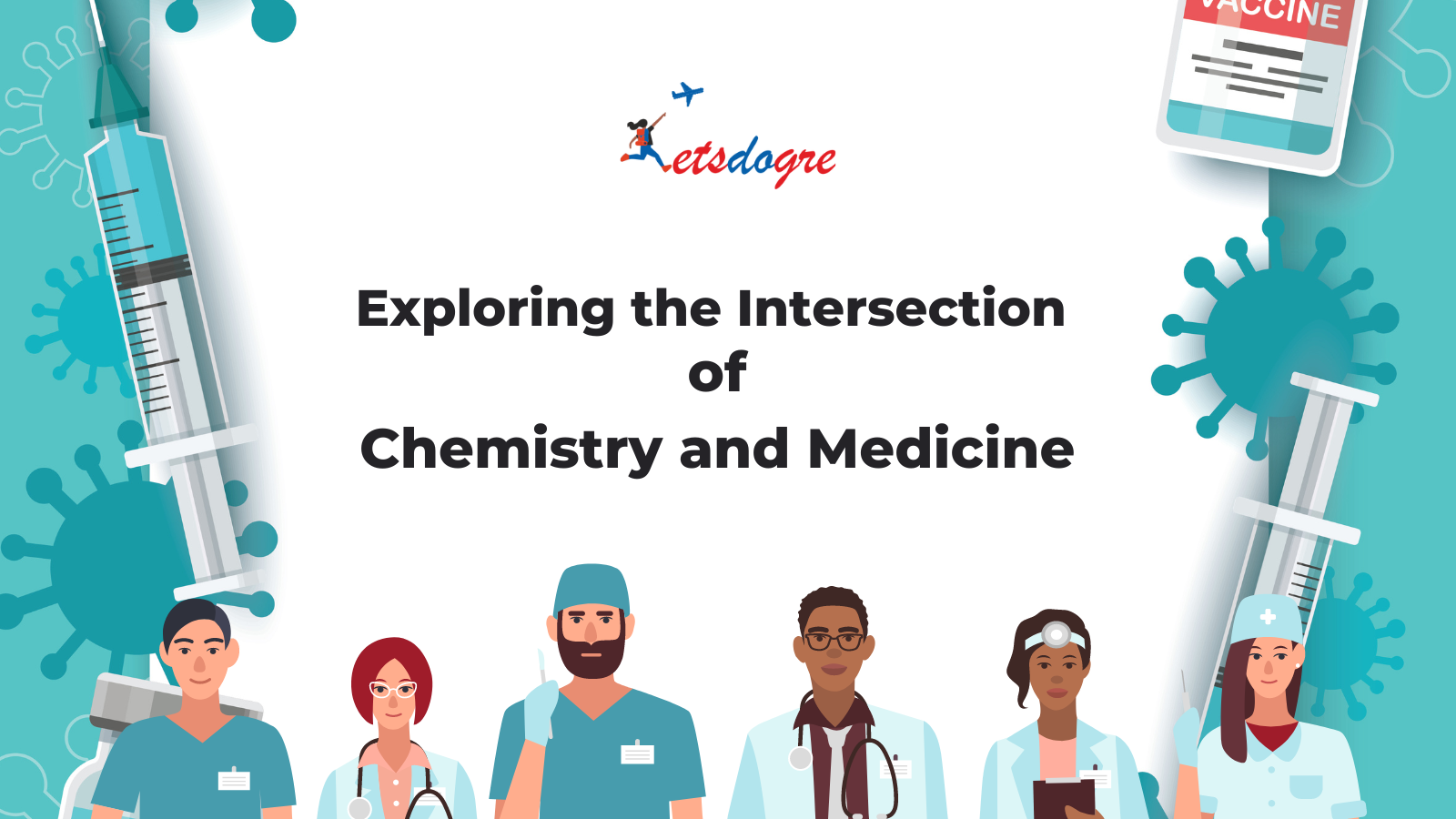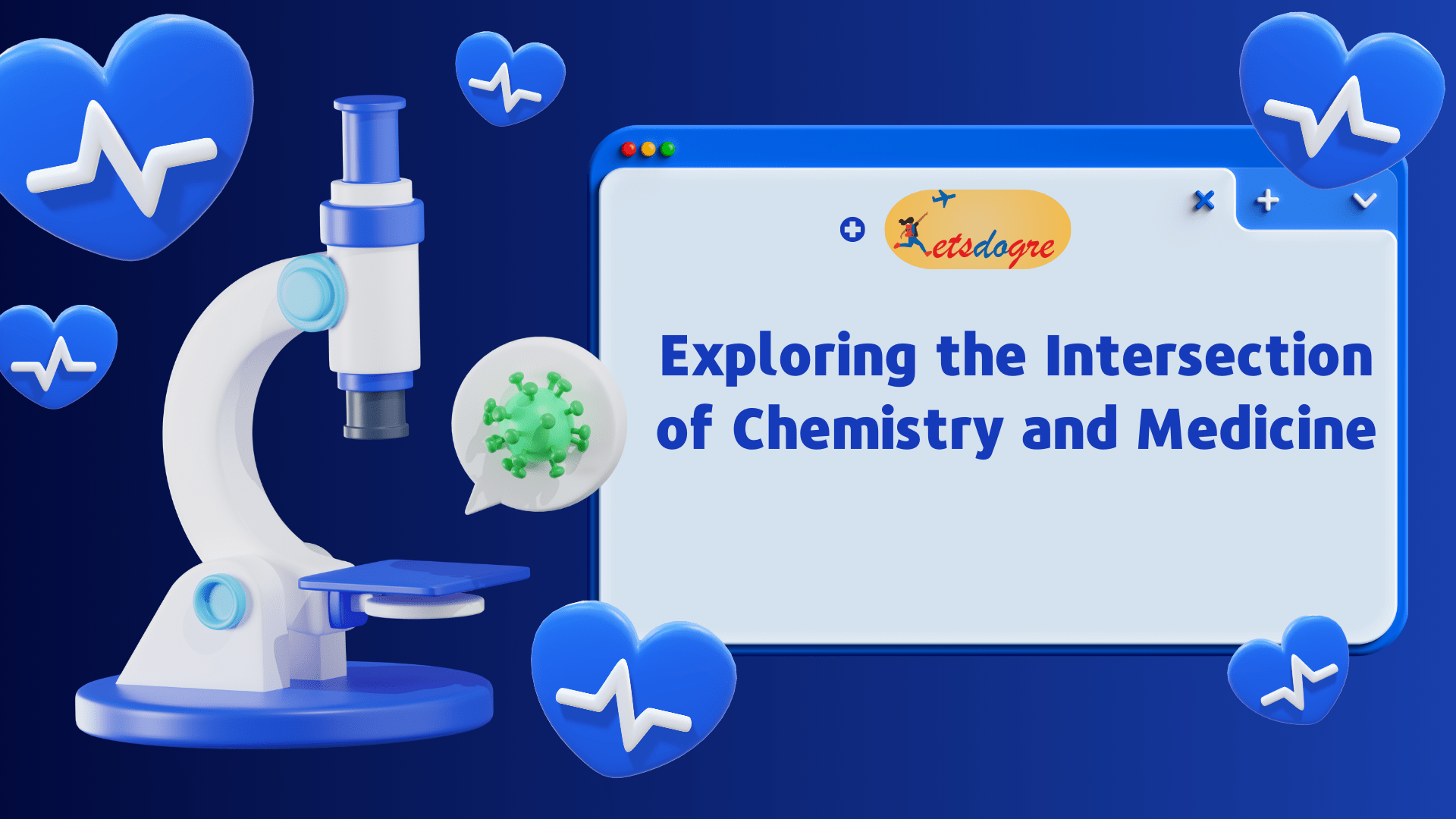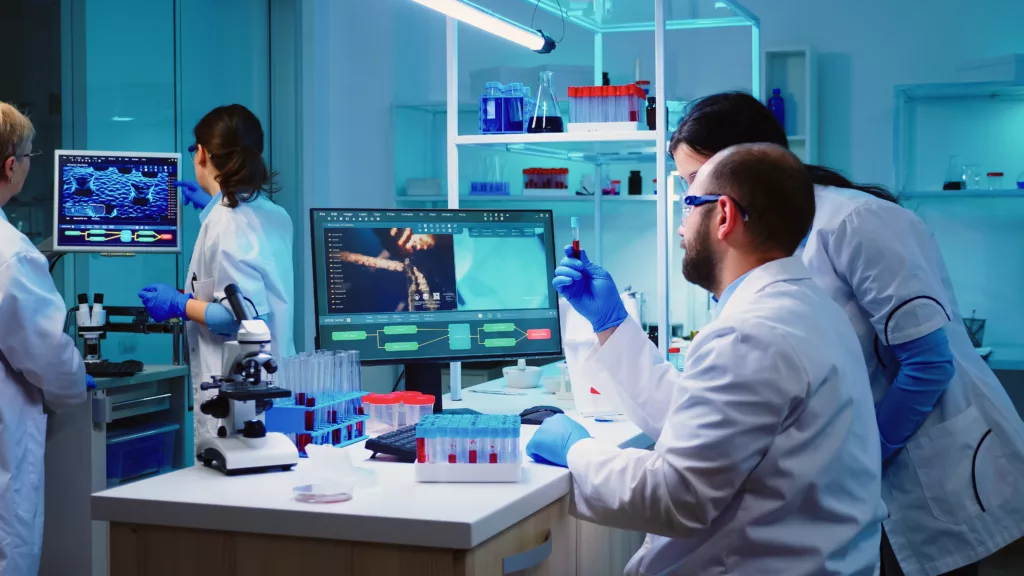
- April 8, 2024
- 11:02 am
-
Views: 439
Exploring the Intersection of Chemistry and Medicine: The Fascinating World of Medicinal Chemistry
Introduction
In the dynamic landscape where chemistry and medicine converge, the captivating field of medicinal chemistry emerges as a cornerstone of drug discovery and development. With its intricate blend of scientific principles and innovative methodologies, medicinal chemistry holds the key to unlocking new treatments for a myriad of diseases. In this blog, we embark on a journey into the fascinating world of medicinal chemistry, exploring its pivotal role in designing molecules with precise biological activity, transforming molecules into medicine, and, most importantly, addressing the pressing therapeutic challenges of our time.
History and Development of Medicinal Chemistry:
The roots of medicinal chemistry, a field that we are still exploring today, can be traced back to ancient civilizations. Early humans, in their quest for health and well-being, relied on natural remedies derived from plants, minerals, and animal products to treat various ailments. Ancient texts from civilizations such as Mesopotamia, Egypt, China, and India document the use of herbs and substances for medicinal purposes. These practices, which were the first steps in the systematic study of medicinal compounds and their effects on the human body, laid the foundation for the field of medicinal chemistry as we know it today.
Bridging the Gap: How Medicinal Chemistry Connects Fundamental and Pharmaceutical Chemistry
Medicinal chemistry acts as the bridge between fundamental chemistry, which provides the building blocks and tools for crafting new molecules, and pharmaceutical chemistry, which focuses on turning those molecules into practical, deliverable drugs. Medicinal chemistry is inherently interdisciplinary, drawing upon principles from chemistry, biology, pharmacology, and pharmaceutical sciences. Within academia and industry, medicinal chemistry is often divided into subdisciplines based on specific areas of focus, such as synthetic medicinal chemistry, chemistry and medicine , computational medicinal chemistry, and chemical biology. This multidimensional approach fosters collaboration and synergy across diverse fields, driving progress in drug discovery and development.
Designing Molecules with Precise Biological Activity:
At the heart of medicinal chemistry lies the art and science of designing molecules with specific interactions with biological targets. It’s a process that requires not just scientific knowledge but also a keen eye for detail and a deep understanding of disease pathology. Using a combination of computational modeling, structure-activity relationships (SAR), and biochemical assays, medicinal chemists meticulously craft molecules capable of modulating disease-relevant proteins, enzymes, or pathways. By understanding the molecular mechanisms underlying disease pathology, researchers can tailor drug candidates to exert desired therapeutic effects while minimizing off-target interactions and adverse effects, a testament to the precision and meticulousness of medicinal chemists.
One exemplary instance of crafting molecules with exact biological effects is the development of selective serotonin reuptake inhibitors (SSRIs) for managing depression and anxiety disorders. These are not just theoretical concepts but real medicines that are meticulously tailored to specifically target the serotonin transporter protein (SERT) in the brain. By impeding serotonin reuptake into nerve cells, SSRIs elevate serotonin levels in the synaptic cleft, enhancing neurotransmission and ameliorating mood disturbances. Medicinal chemists employ computational modeling, structure-activity relationships (SAR), and biochemical assays to refine the molecular structure of SSRIs, ensuring optimal affinity and selectivity for the serotonin transporter while minimizing unwanted interactions, thus exemplifying the precision of medicinal chemistry in crafting therapeutically effective molecules with real-world applications.
These journals publish research articles, reviews, and perspectives covering various aspects of medicinal chemistry, including drug discovery, design, synthesis, pharmacology, and optimization. They are respected sources of information within the medicinal chemistry community.
Transforming Molecules into Medicine:
Once promising lead compounds are identified, medicinal chemists embark on the journey of transforming molecules into medicines. This process involves optimizing drug-like properties, such as potency, selectivity, solubility, and metabolic stability, to ensure efficacy and safety in vivo. Through iterative cycles of synthesis, testing, and optimization, lead compounds are refined into drug candidates poised for further preclinical and clinical evaluation.

Computational Tools for Drug Discovery:
In the quest for novel therapeutics, computational tools play a pivotal role in predicting how potential drug molecules might interact with disease targets. Molecular docking, molecular dynamics simulations, and quantitative structure-activity relationship (QSAR) modeling are just a few examples of computational techniques used to rationalize drug design and optimize molecular properties. By harnessing the power of computational chemistry, researchers can accelerate the drug discovery process and prioritize lead compounds for experimental validation.
Recent Drug Discoveries:
In recent years, medicinal chemistry has witnessed remarkable breakthroughs in drug discovery, leading to the development of innovative treatments for a diverse range of diseases. From targeted cancer therapies and antiviral agents to novel antibiotics and treatments for neurodegenerative disorders, recent drug discoveries showcase the transformative potential of medicinal chemistry in improving human health and quality of life.
One recent notable drug discovery in medicinal chemistry is the development of mRNA COVID-19 vaccines, such as the Pfizer-BioNTech and Moderna vaccines. These vaccines represent a groundbreaking advancement in vaccine technology, utilizing messenger RNA (mRNA) to instruct cells to produce a viral protein that triggers an immune response against the SARS-CoV-2 virus. The rapid development and deployment of mRNA vaccines in response to the COVID-19 pandemic demonstrate the innovative capabilities of medicinal chemistry in addressing urgent global health challenges.
Therapeutic Challenges
Despite significant advancements, medicinal chemistry continues to face numerous therapeutic challenges, including drug resistance, off-target effects, and limited efficacy in certain disease contexts. Addressing these challenges requires innovative approaches, such as combination therapy, drug repurposing, and personalized medicine, to overcome barriers to treatment and optimize therapeutic outcomes.
Optimizing Drug Properties:
Optimizing drug properties is a critical aspect of medicinal chemistry, ensuring that lead compounds possess the necessary characteristics for clinical success. This involves fine-tuning molecular structures to enhance potency, selectivity, pharmacokinetic properties, and safety profiles. Through a combination of synthetic chemistry, computational modeling, and biological testing, medicinal chemists strive to create molecules that meet the stringent criteria for drug development and regulatory approval.
Synthesis and Testing:
The synthesis and testing of potential drug molecules represent key milestones in the drug discovery process. Medicinal chemists employ a wide array of synthetic methodologies to access diverse chemical space and generate novel compounds for evaluation. These compounds are then subjected to rigorous biological testing, utilizing in vitro and in vivo assays to assess pharmacological activity, toxicity, and ADME (absorption, distribution, metabolism, and excretion) properties.
Prominent Figures in Medicinal Chemistry:
Numerous renowned Laureates and Professors have made significant contributions to the field of medicinal chemistry, advancing our understanding of drug design, discovery, and development. These visionary scientists have shaped the landscape of medicinal chemistry and inspired generations of researchers to push the boundaries of scientific innovation.
Nobel Laureates:
Elie Metchnikoff (1908): While not strictly a medicinal chemist, his work on phagocytosis, the process by which white blood cells engulf and destroy pathogens, laid the groundwork for the development of antibiotics.
Gerhard Domagk (1939): Discovered the first commercially available sulfa drug, Prontosil, which revolutionized the treatment of bacterial infections.
Howard Florey (1945) & Ernst Boris Chain (1945): Shared the Nobel Prize for their work on penicillin, one of the most impactful antibiotics ever discovered.
John Vane (1982): Pioneered research on aspirin-like drugs (prostaglandins) and their role in inflammation and pain, leading to the development of new pain relievers.
Robert Lefkowitz (2012): His work on G protein-coupled receptors (GPCRs) has had a profound impact on drug discovery, as many medications target these receptors.
Top Professors in Medicinal Chemistry:
K.C. Nicolaou (Scripps Research): Renowned for his work on the total synthesis of complex natural products with medicinal potential, including Taxol, an anti-cancer drug.
Carolyn Bertozzi (Stanford University): A leader in the field of bioorthogonal chemistry, developing tools to study and manipulate biological systems within living organisms.
Stephen L. Buchwald (Massachusetts Institute of Technology): Pioneered palladium-catalyzed cross-coupling reactions, a fundamental tool in modern organic synthesis, crucial for drug discovery.
Susan G. Boxer (Stanford University): Expert in chemical biology, using advanced techniques to understand the role of metals in biological processes and develop new chemotherapeutic agents.
David W.C. MacMillan (Princeton University): Known for his work on asymmetric organocatalysis, developing new catalysts for selective synthesis of complex molecules with potential for drug development.
Top Research Journals in Medicinal Chemistry
- Journal of Medicinal Chemistry
- Bioorganic & Medicinal Chemistry Letters
- European Journal of Medicinal Chemistry
- Medicinal Chemistry Research
- ACS Medicinal Chemistry Letters
- Drug Discovery Today
- Molecular Pharmaceutics
- Expert Opinion on Drug Discovery
- Future Medicinal Chemistry
- Journal of Enzyme Inhibition and Medicinal Chemistry
- Mini-Reviews in Medicinal Chemistry
- Medicinal Research Reviews
- Bioorganic & Medicinal Chemistry
- Asian journal of organic and medicinal chemistry
Conclusion
As we navigate the complex interplay between chemistry and medicine, medicinal chemistry stands as a beacon of innovation and discovery. Through its integration of scientific principles, computational tools, and experimental techniques, medicinal chemistry continues to revolutionize the way we understand and treat disease. As we look to the future, let us embrace the challenges and opportunities that lie ahead, knowing that the transformative potential of medicinal chemistry holds the promise of a healthier, brighter tomorrow.
Frequently Asked Questions
Medicinal chemistry plays a crucial role in healthcare by identifying, designing, and optimizing compounds that can treat, prevent, or manage various diseases and medical conditions. It contributes to the development of new drugs and therapies that improve patient outcomes and quality of life.
The primary goals include identifying new drug targets, designing and synthesizing molecules with desired biological activities, optimizing drug properties such as potency, selectivity, and pharmacokinetics, and understanding the mechanisms of drug action and resistance.
Challenges include overcoming drug resistance, optimizing drug delivery methods, and navigating regulatory hurdles. However, advancements in technologies such as artificial intelligence and genomic sequencing hold promise for accelerating drug discovery and development in the future.






